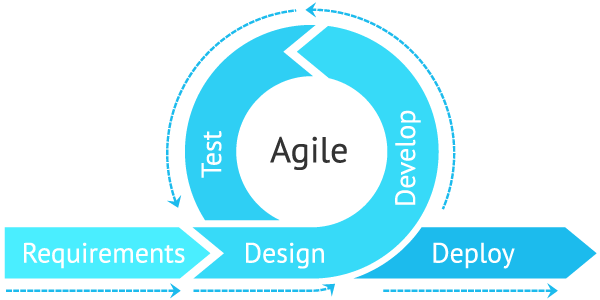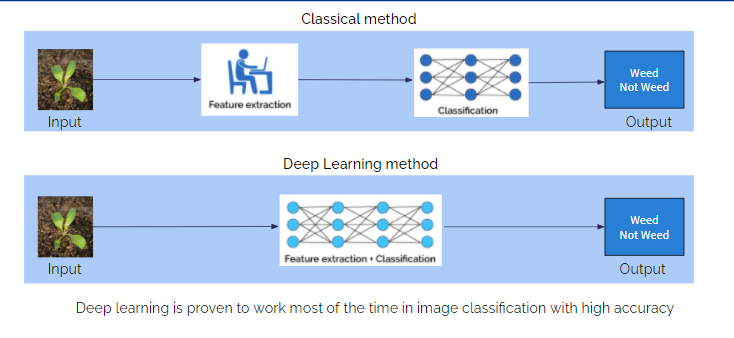Weeds are an all too common occurrence in lawns and gardens. While some may be deemed useful or attractive, most types of weeds are considered a nuisance. Object recognition is a general term to describe a collection of related computer vision tasks that involve identifying objects in digital photographs. Image classification involves predicting the class of one object in an image. Object localization refers to identifying the location of one or more objects in an image and drawing a bounding box around their extent. Object detection combines these two tasks and localizes and classifies one or more objects in an image. We present a system for weed classification. Our goal is to produce a solution which could differentiate between the crop and weed. This can be achieved using deep learning, reducing human effort and saving time.

Using Artificial Intelligence to assist us we were able to get faster results which were more accurate. 100 times quicker than traditional methods. We explored multi-class classification using deep neural networks to improve results. On our first attempt we produced an accuracy of 95%. and we now continue to improve the prediction of the images every day. Deep Learning is a sub-field of machine learning concerned with algorithms inspired by the structure and function of the brain called artificial neural networks. Deep learning methods can achieve state-of-the-art results on challenging computer vision problems such as image classification and object detection. Computer Vision, often shortened to CV, is defined as a field of study that seeks to develop techniques to help computers “see” and understand the content of digital images such as photographs and videos. It speeds up the computation process and improves the results (helps to identify the crop or any image) and reduces human effort and saves time. The deep convolution neural network is adopted for the object classification.


We proposed a web based application for sugar beet weed classification and detection using deep learning and computer vision. Our model takes an image of the plant as an input, extracts the features and classifies the plant. The scope of this project is to explore the feasibility of detection of weeds at an early stage based on close-up images of single plants grown under greenhouse conditions.

We will be implementing the Single Shot Multibox Detector (SSD), a popular, powerful, and especially nimble network for this task. Earlier architectures for object detection consisted of two distinct stages – a region proposal network that performs object localization and a classifier for detecting the types of objects in the proposed regions. Computationally, these can be very expensive and therefore ill-suited for real-world, real-time applications. Single-shot models encapsulate both localization and detection tasks in a single forward sweep of the network, resulting in significantly faster detections while deployable on lighter hardware. A bounding box is a box that wraps around an object i.e. represents its bounds.
We present a system for weed classification and detection. Our goal is to produce a working model which can differentiate, within a reasonable degree of confidence between different plants. We were able to achieve multi class classification using deep learning methods and proposed a pipeline for this problem. We have used machine learning over the classical method resulting in better accuracy and better performance of the model.

